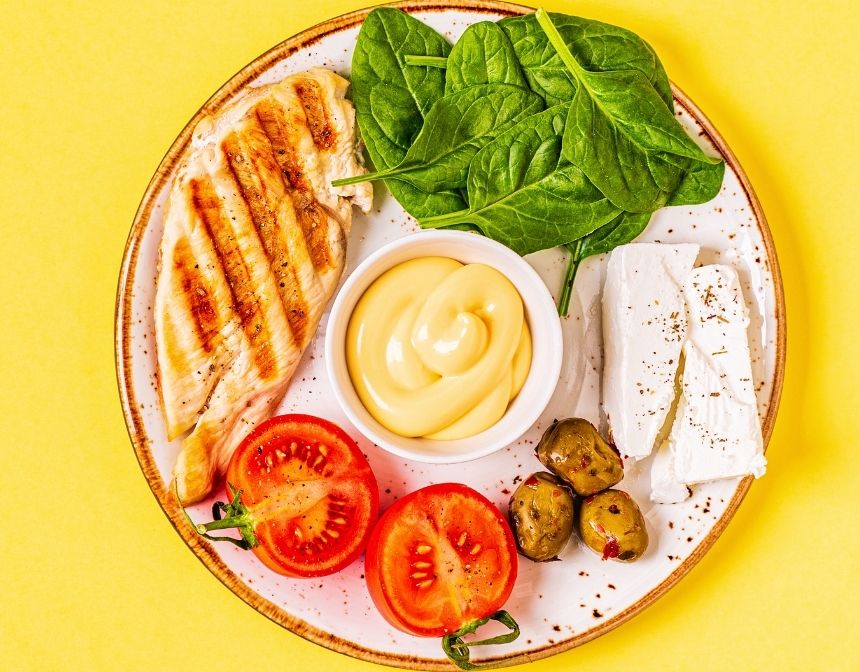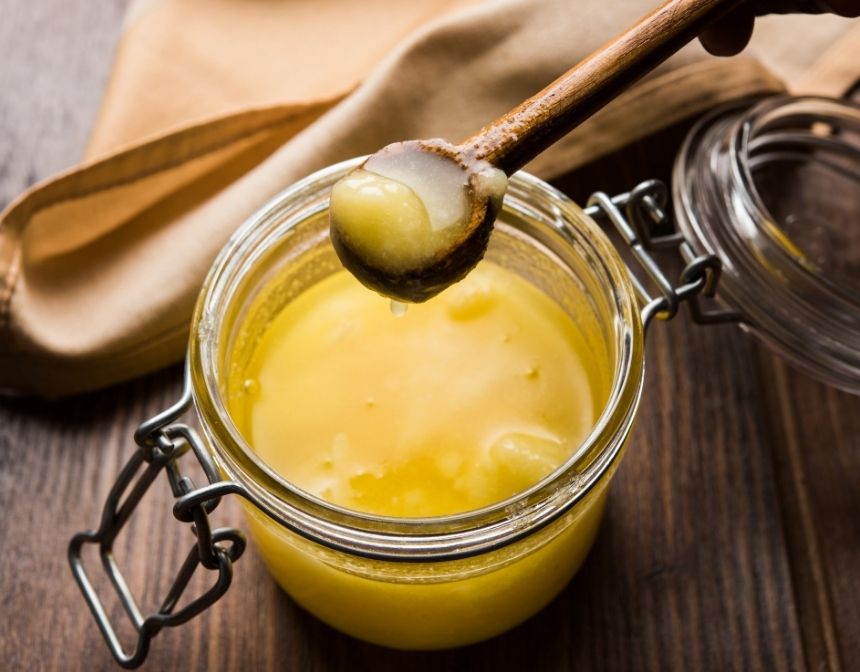What Is Steak Salad?
The steak salad is a dish that perfectly marries the savoriness of well-cooked beef with the freshness of varied greens and vegetables. It has a history as diverse as its ingredients.
While it is hard to pinpoint the exact origin of this dish, it is a testament to the universal appeal of combining meat with vegetables. The idea of tossing together greens and steak is not confined to one specific cuisine; rather, it is a global concept embraced by many cultures, each adding their unique twist. This recipe, in particular, draws inspiration from American cuisine, where the love for steak is well-documented, and salads are a staple.
Variations of Steak Salad
Flank steak salad, with its robust flavors and satisfying textures, is adaptable to personal preferences and seasonal availability. Feel free to experiment with different vegetables, cheeses, and nuts to add variety and cater to different tastes.
What Are The Best Cuts Of Steak For Salad?
The best cuts of steak for a salad depends on personal preference, budget, and how you intend to prepare it. However, some cuts of steak tend to work better for salads due to their texture, flavor, and how well they pair with fresh vegetables. Here are some top choices:
1. Flank Steak
Texture and Flavor: Flank steak is lean and has a strong beefy flavor. It benefits from marinating and should be sliced thinly against the grain to ensure tenderness.
Preparation: It is best when grilled or broiled and cooked to medium-rare or medium.
Why it Works for Salad: Its bold flavor stands up well to a variety of dressings, and its thin slices are easy to eat with a fork.
2. Sirloin Steak
Texture and Flavor: Sirloin is a lean cut that is still tender and flavorful.
Preparation: It can be grilled, broiled, or pan-fried.
Why it Works for Salad: It's a versatile cut that can be cooked in many ways and is tender enough to complement the crispness of fresh greens.
3. Ribeye Steak
Texture and Flavor: Ribeye is more marbled with fat, making it juicy and rich in flavor.
Preparation: It is best when grilled or pan-fried.
Why it Works for Salad: Its richness can be a nice contrast to a light, acidic dressing, and fresh vegetables.
4. Strip Steak (New York Strip)
Texture and Flavor: Has a good balance of tenderness and beefy flavor with some marbling.
Preparation: It can be grilled, broiled, or pan-fried.
Why it Works for Salad: It offers a good compromise between tenderness and flavor, working well with a variety of vegetables and dressings.
5. Skirt Steak
Texture and Flavor: Skirt steak has a lot of flavors and is best when cooked quickly at a high temperature.
Preparation: It should be marinated to help tenderize the meat and cooked quickly over high heat.
Why it Works for Salad: Its robust flavor can stand up to bold dressings, and when sliced thinly, it’s perfect for topping a salad.
Whichever cut you choose, make sure to cook it to the proper temperature and slice it thinly against the grain for the best results. For more, check out our ‘Beef Cuts’ article.
How To Prepare Steak?
Preparing steak involves several key steps, from choosing the right cut and marinating or seasoning it, to cooking it to your desired doneness. Here’s a guide to help you prepare a perfect steak:
1. Choose Your Steak Cut: Select a steak cut based on your preference for flavor, tenderness, and budget. Popular choices include ribeye, sirloin, filet mignon, strip steak, and flank steak.
2. Bring to Room Temperature: Take the steak out of the refrigerator and let it sit at room temperature for about 20-30 minutes before cooking. This helps it cook more evenly.
3. Preheat Your Cooking Surface: Ensure your pan, grill, or oven is properly preheated. A hot cooking surface helps sear the steak, locking in juices and flavor.
- For Pan-Searing: Use a heavy skillet or cast-iron pan. Preheat it over medium-high heat.
- For Grilling: Preheat your grill to high. Make sure the grates are clean and well-oiled to prevent sticking.
- For Oven Broiling: Set your oven’s broiler to high and position the rack so the steak will be about 4 inches from the heat source.
4. Season or Marinate: Season the steak generously with salt and pepper. For added flavor, you can also marinate it for a few hours or overnight in the refrigerator.
5. Cook to Desired Doneness: Cook the steak on the preheated surface, turning it once to ensure even cooking.
Use a meat thermometer to check for doneness:
- Rare: 120-125 °F (49-52 °C)
- Medium Rare: 130-135 °F (54-57 °C)
- Medium: 140-145 °F (60-63 °C)
- Medium Well: 150-155 °F (65-68 °C)
- Well Done: 160 °F (71 °C) and above
6. Let it Rest: After cooking, let the steak rest on a cutting board for about 5-10 minutes. This allows the juices to redistribute throughout the meat, ensuring a juicy result.
7. Slice Against the Grain: Especially important for cuts like flank or skirt steak, slicing against the grain helps break down fibers, making the steak more tender.
By following these steps, you’ll ensure your steak is cooked perfectly, resulting in a juicy and flavorful dish. Whether you’re pan-searing, grilling, or broiling, the key is to start with a good-quality steak, cook it on a properly preheated surface, and allow it to rest before serving. For more, check out our 'How To Cook Steak?' article.
What To Serve with Steak Salad?
Serve steak salad as a main for a fulfilling lunch or dinner, and watch as it becomes a staple in your culinary repertoire, This dish offers a balanced and delectable meal option any day of the week.
Here are our delicious recipes that you can serve with Steak Salad:
How To Store Steak Salad?
Storing steak salad properly is crucial to maintain its freshness, flavor, and safety for consumption. Here’s a guide on how to store your steak salad:
1. Cool It Down: Ensure that the cooked steak and any warm ingredients have cooled to room temperature before storing. This prevents condensation inside the storage container, which could make the salad soggy.
2. Separate Components: If possible, store the steak separately from the salad greens and other fresh ingredients. This helps maintain the texture of the salad and prevents the greens from wilting.
3. Use Airtight Containers: Place the salad and steak in airtight containers. This keeps the food fresh and protects it from absorbing odors from the fridge.
4. Add Dressing Later: If you haven’t already dressed the salad, it’s best to store the dressing separately and add it just before serving. This keeps the salad crisp.
5. Refrigerate Promptly: Place the containers in the refrigerator as soon as possible. Ensure your refrigerator is set at 40 °F (4 °C) or below.
6. Consume Within 1-2 Days: Steak salad is best enjoyed fresh, but if stored properly, it can last in the refrigerator for 1-2 days. The steak, if stored separately, may last up to 3 days.
7. Check for Freshness: Before eating the leftover steak salad, check that the ingredients still look and smell fresh. Any off smells or visual signs of spoilage mean it’s time to toss it out.
Can Steak Salad Be Frozen?
No. Freezing is not recommended for steak salad, as it can significantly degrade the texture of the vegetables and other fresh components.
By following these storage tips, you can extend the life of your steak salad and enjoy it as a delicious leftover meal while ensuring it remains safe and tasty to eat. Remember, when in doubt about the freshness of leftover food, it’s always safer to err on the side of caution and throw it out.














































